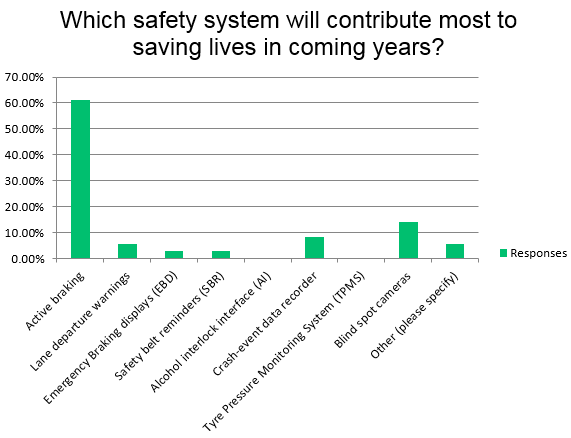RESULTS – Current safety systems are best solution for reducing European road accidents
25 May 2018

25 May 2018
The European Commission has requested that vehicle manufacturers include a larger number of active safety systems in new vehicles, which they hope will mean fewer road accidents.
However, Autovista Group wanted to know which single system, from the list suggested by the Commission, would contribute the most to reducing incidents, and asked readers of the Daily News Brief for their opinions. Options in the poll included current and future proposed technology for inclusion.

The overwhelming winner in the poll was active braking technology, which automatically applies the brakes of a vehicle if it gets too close at too high a speed to another object. 61% of respondents to our poll felt that this would be the most significant safety system needed on all vehicles.
Currently, to achieve a high Euro NCAP safety rating, two active systems must be installed on new cars. Active braking is the most common, with lane departure warning the second most installed. However, just 6% of those who answered felt that this was the answer to reducing Europe’s accident level.
With high regard for active braking, questions can be asked as to why the European Commission wants to add more technology, especially as drivers seem to believe that there is already enough technology included. The mandatory tyre pressure monitoring system (TMPS) received no votes in our poll, while an Alcohol Interlock Interface also received no votes, despite the potential of limiting drink driving offences.
In second place on the poll were blind spot cameras, which would cut the number of accidents involving lorries, especially when it comes to cyclists. 13% of respondents felt that the installation of these would benefit European road safety. This was followed by a crash-event data recorder, with 8% of people thinking they would aid the reduction of accidents. While these would be useful after an accident, studying data will help develop more systems that could help prevent such incidents.
Emergency braking displays and seatbelt warning reminders both garnered 3% of responses while those who chose to comment suggested that autonomous vehicles would be the best development to reduce road collisions.
The results suggest that new systems would only back up those already installed in vehicles, adding to the safety of drivers and those on and around the roads in Europe.